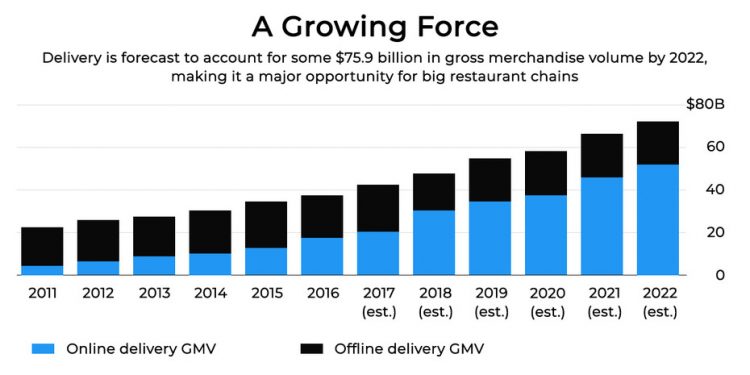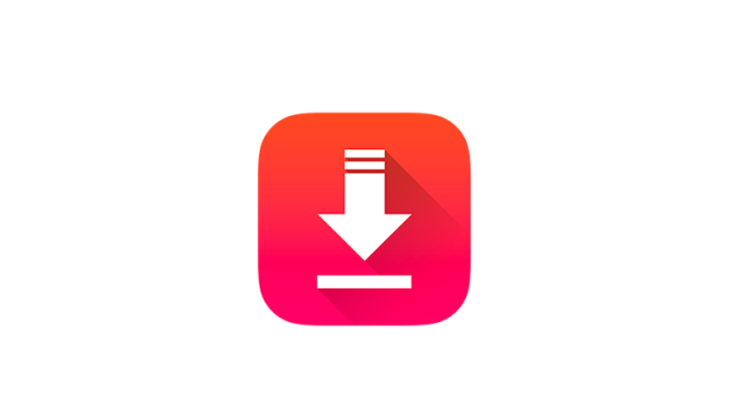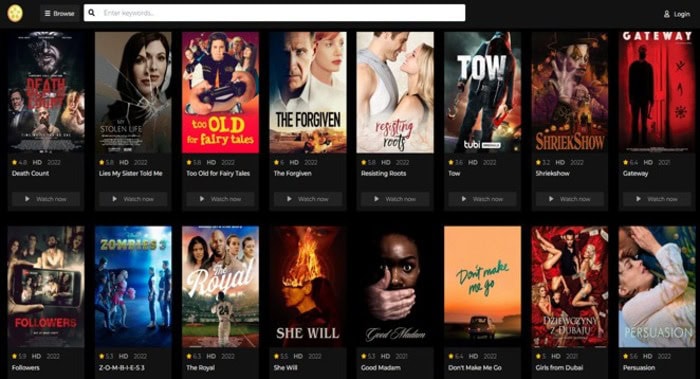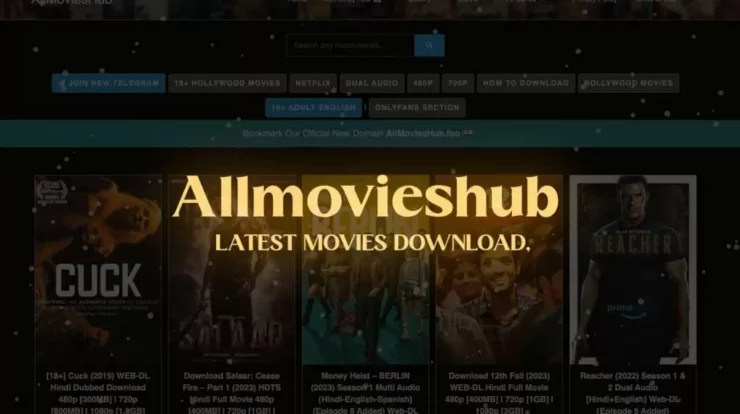
When the cravings hit you hard- you order a pizza
Or maybe a burger, or anything you would like to have, right?
Whatever it be, online food delivery apps like UberEats, GrubHub, Zomato, or JustEat can be your savior. Thanks to smart technologies and online food delivery apps that satisfy our cravings instantly. Leaving in the fast-paced lifestyle, food delivery apps are making their way in this digital age.
Currently, the online food delivery market has huge potential. More and more people are ordering food online and getting more familiar with these apps as it saves time and offers them comfort. Many industry players such as Zomato, UberEats, already have made their names in the food delivery market. Thus, it gives obvious reasons to restaurant owners to develop their own food delivery app.
In the above chart, you can see how the online food delivery market is growing with time. As per the constant change in the consumer’s lifestyle and the latest innovation in technology, you should offer mobile solutions to consumers in order to stay ahead in the competition. By 2020, the food delivery market will reach $32 billion, and if you are one of those business owners who want to develop a food delivery app but having no clue, this blog post is right for you. So, let’s begin.
Developing a User-friendly Food Delivery App for Your Business
Whether you are running a small or large food business, you need to have an app to enter into the larger market. Online food delivery trends are emerging these days, and the app can become a powerful marketing tool for your restaurant business. It can also help you reach a wide audience and open new revenue streams for your business.
However, building a user-friendly food delivery app is not as easy as it seems. From design to features integration to delivery model to selecting the technology stack- there is much more to consider before commencing development.
Well-known food delivery apps like Postmates, Zomato, JustEat, and UberEats have already made their names and started the wave of delivering comfort through apps. This is the reason why the demand for restaurant ordering system is rising—all you need to follow the below points while developing a food delivery app.
# Define your Business Goals
No doubt, there are many food delivery apps available in the market, but you can not copy all of them. To stand tall in the competitive curve, your idea and business goal should be unique that entices users to download your app over anyone else.
You need to be aware of the most recent food delivery trends, including new delivery channels. Make sure before starting development; you have defined business goals and what you want to achieve using the app,
You can ask the following questions to yourself,
- Who will use your app
- Who will be your target audience
- How it will help customers
- Will it drive revenue and traffic?
- What will be the short and long term returns
- A solid monetization strategy
All you need to answer the above questions, you will end up with creative business goals that will help you ahead in the development process.
# Research Your Target Market
If you want thousands of people to download your app, it should have all the modern features that make their lives easy and adds value to your business. Before you start the development process, you need to research the target market that meets your users’ needs and keeps them engaged all the time.
Collect the audience’s demographics and divide them into multiple aspects such as age, gender, nationality, and income. Ask the following questions and research your target market:
- Who are your potential customers
- What are the special features you want to integrate
- What is the maximum spending capacity of your target audience?
All you need to answer the above questions, you will come to know about your target audience and their preferences.
# Choose a Delivery Model
To achieve your desired business goals and to make a food delivery app popular, you need to choose the appropriate business model. There are primarily two types of food delivery business model;
- Order only model
- Order and delivery model
The name itself suggests, if you opt for order only model, you are only responsible for taking and managing orders. You are not bound to deliver those orders. For instance, Eat24 and JustEat follow the same business model.
Second, this is the most popular food delivery business model followed by popular food delivery companies such as Zomato, GrubHub, Deliveroo, Doordash, etc. Along with managing orders, you also responsible for the delivery of those orders.
# Choose the Features you Want to Incorporate
Once you are done with the right business model for your business, the next step is to integrate all the modern features that excite your customers to install your app.
Here’s a list of all critical features that your food delivery app should have:
- Advanced search options
- Multiple payment options
- Allow social media login
- Live chat option
- Order tracking
- Reviews and ratings
It means, provide all the necessary features that make the user-experience woow and increase brand loyalty.
# Select the Right Technology Stack
Once you realize what features you want to incorporate in your food delivery app, now it’s time to know about the tech stack you require to build those features into your app,
- You can use Auth for an eas�, safe, and secure registration process.
- If you want to list out all the restaurants, you need to integrate FoursqaureAPI.
- For safe and secure payment integration, you can use Paypal, Braintree, or Stripe SDK.
In the end, you need to choose a skilled and experienced technology partner that helps you deliver a user-friendly food delivery app for your restaurant business.
Ending Words
The food delivery market is growing tremendously; if you want to stay afloat in the competitive business world, you need to have an appealing app that enables customers to place and track their orders in a single tap. So, get started without any delay and shine unique among competitors.
Author bio
Deep Moteria
Deep is a serial entrepreneur and blogger who wishes to support the ground transportation industries with his writings. He covers up all the known and unknown facts around the industry and puts it together to create trending articles across different websites. He also includes details on the latest trends, fun facts, business expectations, strategies, and models to follow to achieve success in the transportation sector.




